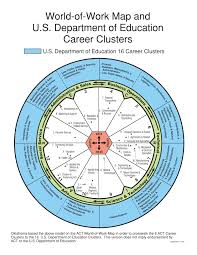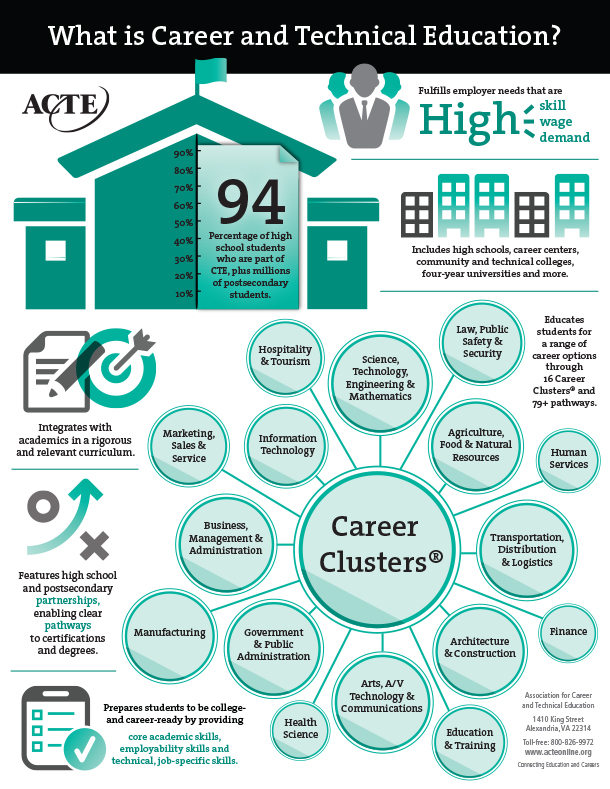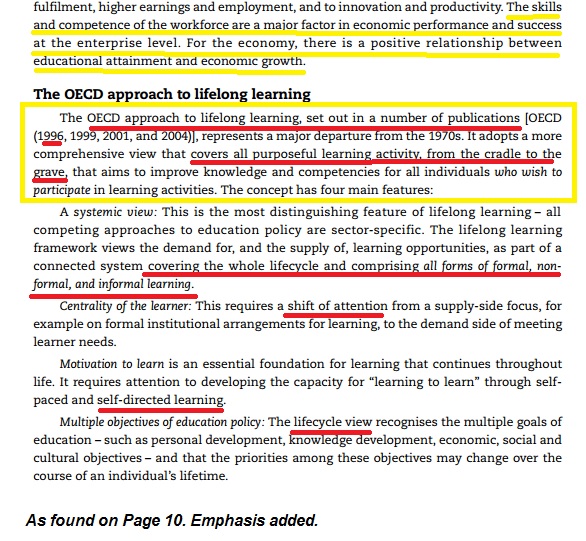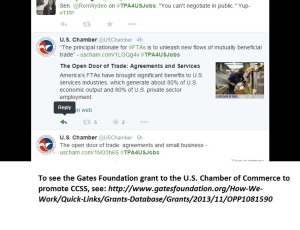In our fight against Common Core, we’ve learned that it’s a lie to think CC is only for K-12. We’ve learned it’s before K and after 12th. So, what IS the difference between a Career Cluster and a Career Pathway? They are both Common Core aligned. I often thought they were the same thing, just using difference names to throw the anti CCSS warriors a dud lead. Oh, but I think I’ve found out something new! Curious? I hope so!

Above is one of the official logos for Career Pathways, below is one of the many logos for Career Clusters. Both of these are from the U.S. Dept. of Education. However, each state will have it’s own logo. Look for the similarities between the national levels and state levels in logos when you search your state’s.

So, is the U.S. Dept. of Education THE founder of Career Pathways/Clusters? Great question. As far as my research has been able to confirm, not only has the U.S. Government dreamed this up years ago, along the way it has had help from various outside sources as well. More recently, the joint project between Harvard University and Pearson Publishing (Pathways to Prosperity) catapulted the movement into high gear.
But, don’t leave out the Association for Career Technical Education(ACTE) , or the National Association of State Directors for Career Technical Education Consortium(NASDCTEc). These groups have spent millions of dollars aligning curriculum, courses, and creating caucuses to ensure CCSS is carried over into the post-secondary world.
Career Cluster/Pathway History:
According to one website I found the Career Cluster movement began back in 1996. Here’s an excerpt, “The Career Clusters Initiative began in 1996 in the U.S. as the Building Linkages Initiative and was a collaborative effort between the U.S. Department of Education, the Office of Vocational and Adult Education (OVAE), the National School-to-Work Office (NSTWO) and the National Skill Standards Board (NSSB). The purpose of the Initiative was to establish linkages among State educational agencies, secondary and postsecondary educational institutions, employers, industry groups, other stakeholders and Federal agencies. The goal was to create curricular frameworks in broad career clusters, designed to prepare students to transition successfully from high school to postsecondary education and employment in a career area.” To see the rest of the history this WorkSuite website has, see: http://www.theworksuite.com/pathways_stem.html (*NOTE: this appears to be a pro STEM/CCSS site, however, the links and information are worth considering in fighting CCSS/STEM)
To see the Federal Registry announcement from 2000 about Career Clusters, see: http://www2.ed.gov/legislation/FedRegister/announcements/2000-4/120600a.html
Related Resources:
If you’d like a visual slide show which easily explains a more modern approach to Career Pathways, see: http://www.clasp.org/issues/postsecondary/pages/career-pathways-explained- To see the “Pathways to Prosperity” up to the date movement in the states: http://www.jff.org/initiatives/pathways-prosperity-network (*Note: This includes the Jobs for the Future organization as well. JFF is CCSS aligned and has several projects to help aid the efforts of alignment. For example, see: http://www.studentsatthecenter.org/ To see the other JFF CCSS projects/papers: http://www.jff.org/tags/common-core)
- NASDCTEc’s website: http://www.careertech.org/ (*Note, I’ve written about their CCSS ties many times, here are the top 2. See: https://www.commoncorediva.com/tag/nasdctec/)
- ACTE’s website: https://www.acteonline.org/ (*Note, here’s the link to all the articles I’ve written which contain ACTE or Career Tech Education. See: https://www.commoncorediva.com/?s=ACTE )
Simply put:
So, what exactly is the difference? Here’s a great explanation I found on a website for MN’s Career Pathways.
Career pathways are small groups of occupations within a career cluster. Occupations within a pathway share common skills, knowledge, and interests. (source: https://www.iseek.org/careers/pathways.html)
So When DID CCSS enter the Career Pathways/Clusters Business?
Another excellent question! I have included the 2011 Council of Chief State School Officer’s document which details how the Career Tech Assessment world was to become CCSS aligned. See: CTE Assessment White Paper – Final
- Others Who Chimed in on Career Ed Tech:
The Bill and Melinda Gates Foundation awarded ACTE a grant to align CTE and CCSS. See:
http://www.acteonline.org/general.aspx?id=6873#.VQCLg_zF-hQ (Gates Grant Database link: http://www.gatesfoundation.org/How-We-Work/Quick-Links/Grants-Database/Grants/2014/07/OPP1113402 ) - Other Gates Foundation Career Pathways Grants can be found by accessing this link:
http://www.gatesfoundation.org/How-We-Work/Quick-Links/Grants-Database#q/k=Career%20Pathways - To see the partners beside Pearson and Harvard behind the push for a social justice movement in post-secondary Career Pathways, see the picture below:

- To access the Harvard (entire) report, http://dash.harvard.edu/bitstream/handle/1/4740480/Pathways_to_Prosperity_Feb2011-1.pdf?sequence=1
- Carnegie’s grants for such? Oh yes, you can access them. But, I suggest starting here: http://www.insidephilanthropy.com/grants-for-college-readin/carnegie-corporation-of-new-york-grants-for-college-readines.html If you’d like to see the 8 pages of grants given for Career Tech Education, http://carnegie.org/grants/grants-database/?programs=5
- The U.S. Dept. of Ed’s Alignment for Community Colleges and CTE Report from 2011: brief-2-alignment (*Note: don’t miss the involvement of Partnership for 21st Century Skills in this report)
- College Board’s in on it too! See the case study for AccuPlacer in a NC school district: aligning-curriculum-with-k12-college-partnerships-asheville-buncombe-case-study
- KnowledgeWorks (an arm to CCSSO) has an entire theme that chills me, ‘cradle to career’. See all the rhetoric: http://www.knowledgeworks.org/search/node/career%20tech%20education
Closing:
So, while we’ve learned that Career Clusters and Career Pathways are not the same thing, we also have learned how both are CCSS aligned. No career can truly be its best when it is aligned with standards, programs, curricula based on a lie. What a dreadful future we face. No future aligned to STEM (which, if you’ll remember was the main agenda years ago with CCSS as the delivery system, see my PCAST, STEM, and CCSS article from 2014) OR CCSS can help our students succeed or our nation be fantastic. I think careers are great, I think assessments, learning about the subjects are worthy. I just don’t believe we are best served by running all of these through the CCSS Machine.



11 thoughts on “Tech Thursday: Difference Between Careers”